Opinion & Analysis
The Wedge Guy: Scoring-range performance
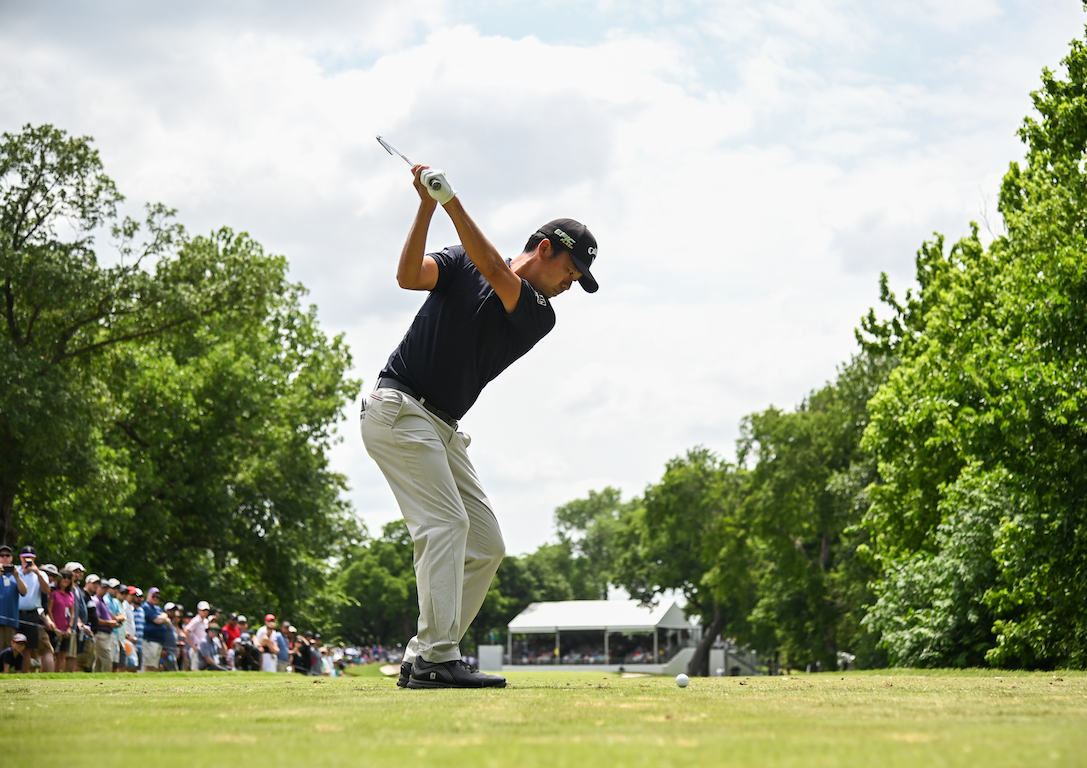
Editor’s note: Regarding the featured image, Kevin Na was the Tour leader in proximity last season on approaches of 150-175 yards. Jordan Spieth led in proximity from 125-150 yards.
This is the first of a series that will expand on the concept I proposed last week that you should break down your “scoring-range performance” into five distinct segments. If we can agree that there is a lot of difference between a textbook 9-iron shot and a chip, between the dreaded “half-wedge” and a putt, then let’s dissect the last 100-150 yards of golf on each hole into these five pieces.
We all know those players who seem to shine at one or more aspects of the scoring range but struggle with others. That guy who is dreadful with a pitch shot but is a deadly putter. Or the one who hits crisp and accurate short irons and wedges but is awful on his or her chip shots. So, let’s not lump all these into one bucket called “the short game”, but rather give them each some focused attention. I hope you all can glean a tip or idea from each of these articles to help you score better.
Part 1: Short iron and wedge shots
On the PGA Tour, the vast majority of birdies are made when the player has a short iron or wedge into the green (discounting the almost automatic birdies they make by hitting irons to par-5 holes). Even these guys don’t knock flags down from long range all that often. And the very low scoring that has become common to PGA Tour events comes from the fact that these guys hit the majority of their approach shots with an 8-iron or less.
Think about that when you review your last round of golf: on how many holes did you have an approach shot with an 8-iron or less in your hands? If the number is less than 8-10, then you are playing a much longer and harder course than the pros play (proportionate to your strength profile).
But regardless of strength, when you do have those short-range approach shots, this is your chance to score. It doesn’t matter if you consider a “textbook” 8-iron shot to be 160 yards or 120 yards, this is the time to increase your chances for par or better. So, I would like to offer a few fundamental ideas that can hopefully help you improve that part of your game.
First of all, let’s define what a “full swing” means. With a driver, ball sitting on a tee, it means really getting after it. But with a short iron or wedge in your hands, a “full” swing is something of much less force and power. The key to consistent short iron and wedge play is to make consistent contact with a consistent swing path. That’s the only way to achieve repeatable trajectories and therefore distance control. And the best way to ensure more consistency is to s-l-o-w d-o-w-n.
In addition, I believe the left side must become a more dominant leader in the swing with these shots, so that your hands always get to the ball before the clubhead. This sets up a slightly downward strike to optimize spin and trajectory. I also believe we should all work a bit harder to make these swings a slight bit flatter, which path imparts a more direct blow to the ball. That will make these swings a bit shorter and more controlled and should result in more penetrating trajectories. [NOTE: My analysis of over 50,000 golfer profiles indicates the vast majority of players, of all handicaps, say they hit their short irons and wedges too high.]
As you improve your “full swing” shotmaking with the short irons and wedges, it really is not that hard to dissect the distance gaps between clubs. The physics of golf club engineering makes the distance gap between the short clubs typically wider than between the long clubs; this is aggravated by the recent trend by manufacturers to put five degrees between the 8- and 9-iron, while reducing the loft difference to three degrees at the long end of the set. The typical golfer of moderate strength will experience a 12-15-yard differential at the short end of his or her set. That is too large for precision play, so you simply must learn how to cut that into pieces.
Given that it is difficult for the recreational player to devote enough time to master multiple swing speeds, the simplest way to do that is to learn to grip down precisely to shorten the club and therefore reduce the distance the ball will fly. It takes a little experimentation, as each golfer is different, but gripping down about half an inch should take 3-5 yards off a short-iron or wedge shot. Another half-inch will cut off another 3-5 yards.
Once you kind of figure that out, you can add a measure of precision by opening the face a slight amount (and aim left of the target when you do). Just a few degrees open will give a 9-iron the loft of a pitching wedge, but a bit more distance than the pitching wedge would deliver.
Referring back to my earlier article on your “short game handicap,” I believe any golfer can learn to keep the majority of their full swing short iron and wedge shots within reliable two-putt distance, with the occasions of getting a more makeable putt outnumbering those times when you miss the green entirely. The more skilled you get with these shots, the higher you can set the bar for your own level of performance.
Obviously, a whole book could be written on this subject, but I hope this gives you something new to think about when you are working on your scoring range performance.
- LIKE264
- LEGIT27
- WOW0
- LOL2
- IDHT0
- FLOP4
- OB0
- SHANK10
19th Hole
Vincenzi’s 2024 Zurich Classic of New Orleans betting preview

The PGA TOUR heads to New Orleans to play the 2023 Zurich Classic of New Orleans. In a welcome change from the usual stroke play, the Zurich Classic is a team event. On Thursday and Saturday, the teams play best ball, and on Friday and Sunday the teams play alternate shot.
TPC Louisiana is a par 72 that measures 7,425 yards. The course features some short par 4s and plenty of water and bunkers, which makes for a lot of exciting risk/reward scenarios for competitors. Pete Dye designed the course in 2004 specifically for the Zurich Classic, although the event didn’t make its debut until 2007 because of Hurricane Katrina.
Coming off of the Masters and a signature event in consecutive weeks, the field this week is a step down, and understandably so. Many of the world’s top players will be using this time to rest after a busy stretch.
However, there are some interesting teams this season with some stars making surprise appearances in the team event. Some notable teams include Patrick Cantlay and Xander Schauffele, Rory McIlroy and Shane Lowry, Collin Morikawa and Kurt Kitayama, Will Zalatoris and Sahith Theegala as well as a few Canadian teams, Nick Taylor and Adam Hadwin and Taylor Pendrith and Corey Conners.
Past Winners at TPC Louisiana
- 2023: Riley/Hardy (-30)
- 2022: Cantlay/Schauffele (-29)
- 2021: Leishman/Smith (-20)
- 2019: Palmer/Rahm (-26)
- 2018: Horschel/Piercy (-22)
- 2017: Blixt/Smith (-27)
2024 Zurich Classic of New Orleans Picks
Tom Hoge/Maverick McNealy +2500 (DraftKings)
Tom Hoge is coming off of a solid T18 finish at the RBC Heritage and finished T13 at last year’s Zurich Classic alongside Harris English.
This season, Hoge is having one of his best years on Tour in terms of Strokes Gained: Approach. In his last 24 rounds, the only player to top him on the category is Scottie Scheffler. Hoge has been solid on Pete Dye designs, ranking 28th in the field over his past 36 rounds.
McNealy is also having a solid season. He’s finished T6 at the Waste Management Phoenix Open and T9 at the PLAYERS Championship. He recently started working with world renowned swing coach, Butch Harmon, and its seemingly paid dividends in 2024.
Keith Mitchell/Joel Dahmen +4000 (DraftKings)
Keith Mitchell is having a fantastic season, finishing in the top-20 of five of his past seven starts on Tour. Most recently, Mitchell finished T14 at the Valero Texas Open and gained a whopping 6.0 strokes off the tee. He finished 6th at last year’s Zurich Classic.
Joel Dahmen is having a resurgent year and has been dialed in with his irons. He also has a T11 finish at the PLAYERS Championship at TPC Sawgrass which is another Pete Dye track. With Mitchell’s length and Dahmen’s ability to put it close with his short irons, the Mitchell/Dahmen combination will be dangerous this week.
Taylor Moore/Matt NeSmith +6500 (DraftKings)
Taylor Moore has quickly developed into one of the more consistent players on Tour. He’s finished in the top-20 in three of his past four starts, including a very impressive showing at The Masters, finishing T20. He’s also finished T4 at this event in consecutive seasons alongside Matt NeSmith.
NeSmith isn’t having a great 2024, but has seemed to elevate his game in this format. He finished T26 at Pete Dye’s TPC Sawgrass, which gives the 30-year-old something to build off of. NeSmith is also a great putter on Bermudagrass, which could help elevate Moore’s ball striking prowess.
- LIKE8
- LEGIT3
- WOW1
- LOL1
- IDHT0
- FLOP3
- OB1
- SHANK1
19th Hole
Vincenzi’s 2024 LIV Adelaide betting preview: Cam Smith ready for big week down under

After having four of the top twelve players on the leaderboard at The Masters, LIV Golf is set for their fifth event of the season: LIV Adelaide.
For both LIV fans and golf fans in Australia, LIV Adelaide is one of the most anticipated events of the year. With 35,000 people expected to attend each day of the tournament, the Grange Golf Club will be crawling with fans who are passionate about the sport of golf. The 12th hole, better known as “the watering hole”, is sure to have the rowdiest of the fans cheering after a long day of drinking some Leishman Lager.
The Grange Golf Club is a par-72 that measures 6,946 yards. The course features minimal resistance, as golfers went extremely low last season. In 2023, Talor Gooch shot consecutive rounds of 62 on Thursday and Friday, giving himself a gigantic cushion heading into championship Sunday. Things got tight for a while, but in the end, the Oklahoma State product was able to hold off The Crushers’ Anirban Lahiri for a three-shot victory.
The Four Aces won the team competition with the Range Goats finishing second.
*All Images Courtesy of LIV Golf*
Past Winners at LIV Adelaide
- 2023: Talor Gooch (-19)
Stat Leaders Through LIV Miami
Green in Regulation
- Richard Bland
- Jon Rahm
- Paul Casey
Fairways Hit
- Abraham Ancer
- Graeme McDowell
- Henrik Stenson
Driving Distance
- Bryson DeChambeau
- Joaquin Niemann
- Dean Burmester
Putting
- Cameron Smith
- Louis Oosthuizen
- Matt Jones
2024 LIV Adelaide Picks
Cameron Smith +1400 (DraftKings)
When I pulled up the odds for LIV Adelaide, I was more than a little surprised to see multiple golfers listed ahead of Cameron Smith on the betting board. A few starts ago, Cam finished runner-up at LIV Hong Kong, which is a golf course that absolutely suits his eye. Augusta National in another course that Smith could roll out of bed and finish in the top-ten at, and he did so two weeks ago at The Masters, finishing T6.
At Augusta, he gained strokes on the field on approach, off the tee (slightly), and of course, around the green and putting. Smith able to get in the mix at a major championship despite coming into the week feeling under the weather tells me that his game is once again rounding into form.
The Grange Golf Club is another course that undoubtedly suits the Australian. Smith is obviously incredibly comfortable playing in front of the Aussie faithful and has won three Australian PGA Championship’s. The course is very short and will allow Smith to play conservative off the tee, mitigating his most glaring weakness. With birdies available all over the golf course, there’s a chance the event turns into a putting contest, and there’s no one on the planet I’d rather have in one of those than Cam Smith.

Louis Oosthuizen +2200 (DraftKings)
Louis Oosthuizen has simply been one of the best players on LIV in the 2024 seas0n. The South African has finished in the top-10 on the LIV leaderboard in three of his five starts, with his best coming in Jeddah, where he finished T2. Perhaps more impressively, Oosthuizen finished T7 at LIV Miami, which took place at Doral’s “Blue Monster”, an absolutely massive golf course. Given that Louis is on the shorter side in terms of distance off the tee, his ability to play well in Miami shows how dialed he is with the irons this season.
In addition to the LIV finishes, Oosthuizen won back-to-back starts on the DP World Tour in December at the Alfred Dunhill Championship and the Mauritus Open. He also finished runner-up at the end of February in the International Series Oman. The 41-year-old has been one of the most consistent performers of 2024, regardless of tour.
For the season, Louis ranks 4th on LIV in birdies made, T9 in fairways hit and first in putting. He ranks 32nd in driving distance, but that won’t be an issue at this short course. Last season, he finished T11 at the event, but was in decent position going into the final round but fell back after shooting 70 while the rest of the field went low. This season, Oosthuizen comes into the event in peak form, and the course should be a perfect fit for his smooth swing and hot putter this week.
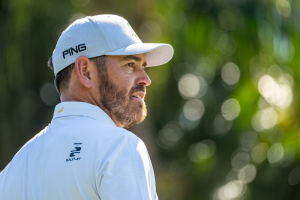
- LIKE12
- LEGIT3
- WOW1
- LOL1
- IDHT0
- FLOP1
- OB1
- SHANK1
Opinion & Analysis
The Wedge Guy: What really makes a wedge work? Part 1
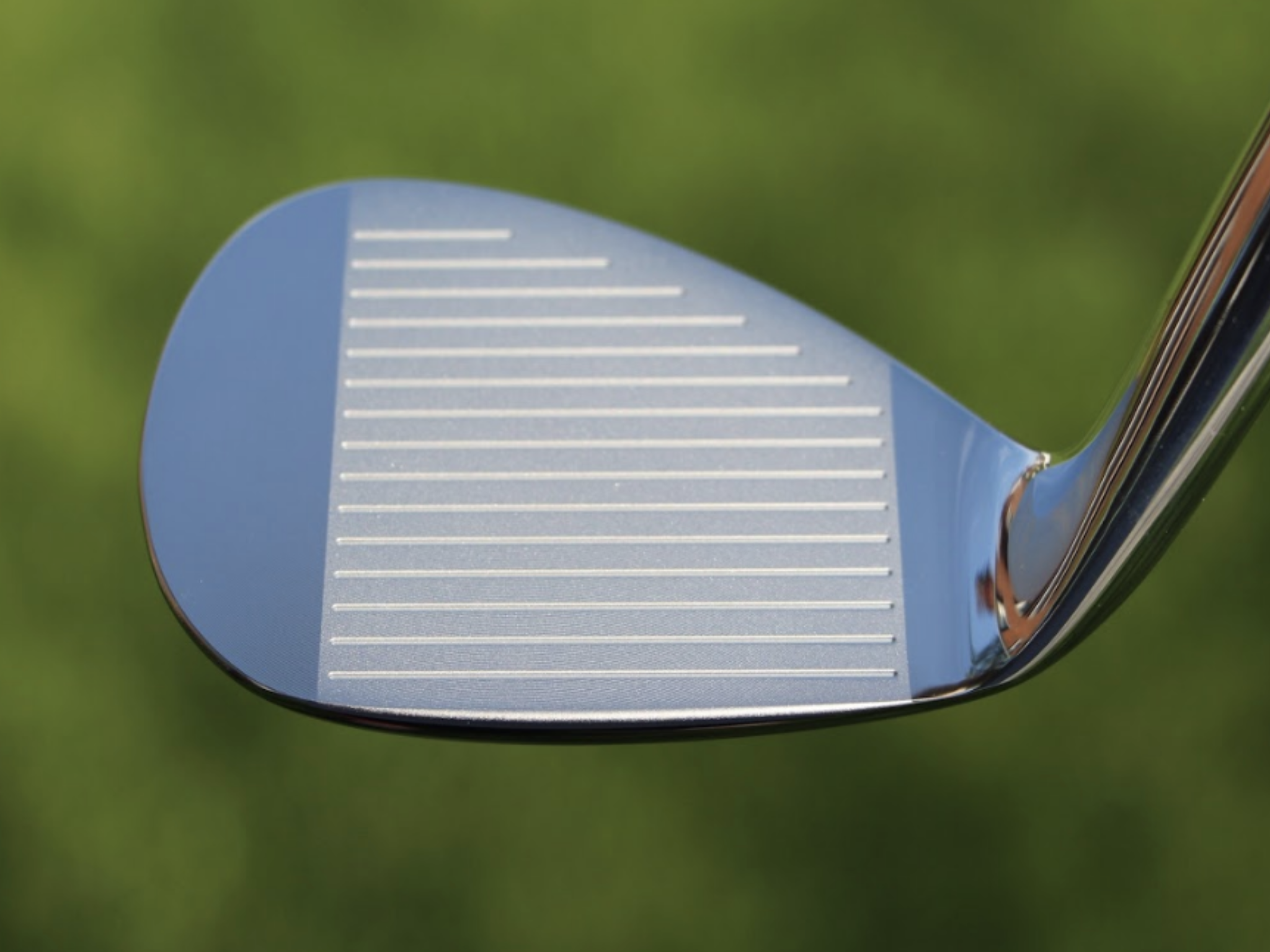
Of all the clubs in our bags, wedges are almost always the simplest in construction and, therefore, the easiest to analyze what might make one work differently from another if you know what to look for.
Wedges are a lot less mysterious than drivers, of course, as the major brands are working with a lot of “pixie dust” inside these modern marvels. That’s carrying over more to irons now, with so many new models featuring internal multi-material technologies, and almost all of them having a “badge” or insert in the back to allow more complex graphics while hiding the actual distribution of mass.
But when it comes to wedges, most on the market today are still single pieces of molded steel, either cast or forged into that shape. So, if you look closely at where the mass is distributed, it’s pretty clear how that wedge is going to perform.
To start, because of their wider soles, the majority of the mass of almost any wedge is along the bottom third of the clubhead. So, the best wedge shots are always those hit between the 2nd and 5th grooves so that more mass is directly behind that impact. Elite tour professionals practice incessantly to learn to do that consistently, wearing out a spot about the size of a penny right there. If impact moves higher than that, the face is dramatically thinner, so smash factor is compromised significantly, which reduces the overall distance the ball will fly.
Every one of us, tour players included, knows that maddening shot that we feel a bit high on the face and it doesn’t go anywhere, it’s not your fault.
If your wedges show a wear pattern the size of a silver dollar, and centered above the 3rd or 4th groove, you are not getting anywhere near the same performance from shot to shot. Robot testing proves impact even two to three grooves higher in the face can cause distance loss of up to 35 to 55 feet with modern ‘tour design’ wedges.
In addition, as impact moves above the center of mass, the golf club principle of gear effect causes the ball to fly higher with less spin. Think of modern drivers for a minute. The “holy grail” of driving is high launch and low spin, and the driver engineers are pulling out all stops to get the mass as low in the clubhead as possible to optimize this combination.
Where is all the mass in your wedges? Low. So, disregarding the higher lofts, wedges “want” to launch the ball high with low spin – exactly the opposite of what good wedge play requires penetrating ball flight with high spin.
While almost all major brand wedges have begun putting a tiny bit more thickness in the top portion of the clubhead, conventional and modern ‘tour design’ wedges perform pretty much like they always have. Elite players learn to hit those crisp, spinny penetrating wedge shots by spending lots of practice time learning to consistently make contact low in the face.
So, what about grooves and face texture?
Grooves on any club can only do so much, and no one has any material advantage here. The USGA tightly defines what we manufacturers can do with grooves and face texture, and modern manufacturing techniques allow all of us to push those limits ever closer. And we all do. End of story.
Then there’s the topic of bounce and grinds, the most complex and confusing part of the wedge formula. Many top brands offer a complex array of sole configurations, all of them admittedly specialized to a particular kind of lie or turf conditions, and/or a particular divot pattern.
But if you don’t play the same turf all the time, and make the same size divot on every swing, how would you ever figure this out?
The only way is to take any wedge you are considering and play it a few rounds, hitting all the shots you face and observing the results. There’s simply no other way.
So, hopefully this will inspire a lively conversation in our comments section, and I’ll chime in to answer any questions you might have.
And next week, I’ll dive into the rest of the wedge formula. Yes, shafts, grips and specifications are essential, too.
- LIKE33
- LEGIT7
- WOW1
- LOL1
- IDHT2
- FLOP3
- OB1
- SHANK3
-

 19th Hole2 weeks ago
19th Hole2 weeks agoDave Portnoy places monstrous outright bet for the 2024 Masters
-

 19th Hole3 days ago
19th Hole3 days agoJustin Thomas on the equipment choice of Scottie Scheffler that he thinks is ‘weird’
-

 19th Hole2 weeks ago
19th Hole2 weeks agoTiger Woods arrives at 2024 Masters equipped with a putter that may surprise you
-

 19th Hole3 days ago
19th Hole3 days ago‘Absolutely crazy’ – Major champ lays into Patrick Cantlay over his decision on final hole of RBC Heritage
-

 19th Hole2 weeks ago
19th Hole2 weeks agoTwo star names reportedly blanked Jon Rahm all week at the Masters
-

 19th Hole1 week ago
19th Hole1 week agoReport: LIV Golf identifies latest star name they hope to sign to breakaway tour
-

 19th Hole1 week ago
19th Hole1 week agoNeal Shipley presser ends in awkward fashion after reporter claims Tiger handed him note on 8th fairway
-

 19th Hole1 week ago
19th Hole1 week agoBrandel Chamblee has ‘no doubt’ who started the McIlroy/LIV rumor and why



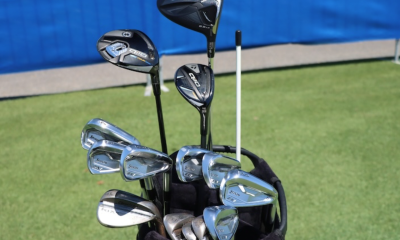



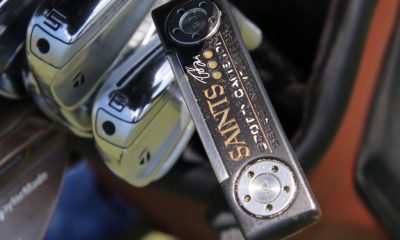





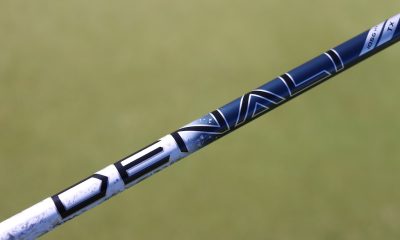






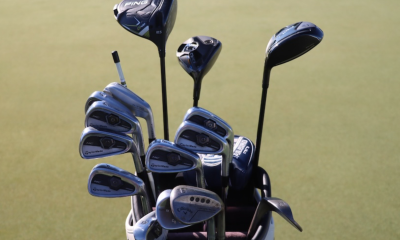

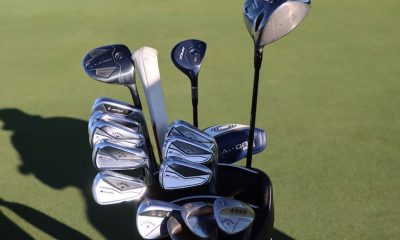

Arnie Segura
Jul 16, 2019 at 9:11 am
Thanks for your insight…
JM
Jul 10, 2019 at 3:39 pm
Try rolling your left wrist so you have knuckles down at impact with your wedges. You will make solid contact every time.
I even do it with my irons and woods and hit a controlled draw. Takes some practice but the ball will sound different and you will get that big lazy swing that goes a mile.
David Herring
Jul 10, 2019 at 3:09 pm
I’ve been playing for almost 60 years, still a mid single digit handicap. I have always thought that better wedge play would help shave even more off my scores. Thanks for the insight!
Prime21
Jul 10, 2019 at 2:04 am
Great article!
Mark M
Jul 9, 2019 at 11:08 am
Hi Terry, I like what you said regarding not going after “full swing” short iron shots like driver. I have found that if I just think 3/4 swing I usually have a better tempo and the swing is not really shortened that much, I just don’t over-swing.
Also, I finally figured out years ago that choking down and making a NORMAL swing to reduce an iron’s distance is SO much easier than trying to make a shorter swing or “feather in” a fade, etc. It takes some practice with the choke down to find out what works best for you but is well worth it.
LionForrest
Jul 9, 2019 at 10:26 am
I like chocolate cake.
Mower
Jul 9, 2019 at 5:20 pm
Me too!